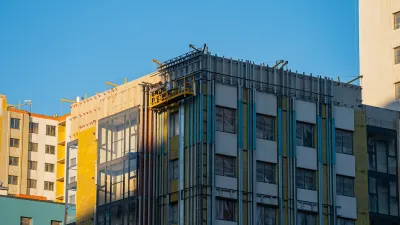An under-reported loan model called Property Assessed Clean Energy, or PACE, financed $660 million of sustainable building improvements from 2016 through 2018.

"Developers grappling with the cost of new laws enacted to combat climate change are taking advantage a little-known finance tool to help pay for green-building requirements," reports Joe Gose.
"The model for the loans, known as Property Assessed Clean Energy, was created in 2008 to fund improvements that create environmentally sustainable and resilient properties," adds Gose. "Now, developers are turning to PACE loans to help create more energy-efficient buildings and meet tougher environmental standards."
"Promoters say a PACE loan is better than conventional debt used for similar upgrades because it is typically cheaper, it has a fixed interest rate and terms are 20 to 30 years instead of three to five," explains Gose. "What’s more, unlike conventional loans, PACE financing becomes an assessment on the property. It is paid annually along with the real estate tax bill, and it transfers to new owners."
Gose is writing for The New York Times, but the examples included in the article are taken from around the country, like in the city of Omaha, where developers Shamrock Development used PACE to fund LED lighting, heat pumps, and low-flow water fixtures, among other building features, for the $205 million mixed-use development called the Capitol District.
The article includes more details on the benefits of the PACE program for developers, as well as a history of the program (born in Berkeley, California), and the expanding pool of money (even former baseball player Alex Rodriguez has sent large chunks of money toward lenders) available for PACE loans.
FULL STORY: To Meet Demand for Green Buildings, Developers Get a Leg Up

Alabama: Trump Terminates Settlements for Black Communities Harmed By Raw Sewage
Trump deemed the landmark civil rights agreement “illegal DEI and environmental justice policy.”

Study: Maui’s Plan to Convert Vacation Rentals to Long-Term Housing Could Cause Nearly $1 Billion Economic Loss
The plan would reduce visitor accommodation by 25% resulting in 1,900 jobs lost.

Planetizen Federal Action Tracker
A weekly monitor of how Trump’s orders and actions are impacting planners and planning in America.

Wind Energy on the Rise Despite Federal Policy Reversal
The Trump administration is revoking federal support for renewable energy, but demand for new projects continues unabated.

Passengers Flock to Caltrain After Electrification
The new electric trains are running faster and more reliably, leading to strong ridership growth on the Bay Area rail system.

Texas Churches Rally Behind ‘Yes in God’s Back Yard’ Legislation
Religious leaders want the state to reduce zoning regulations to streamline leasing church-owned land to housing developers.
Urban Design for Planners 1: Software Tools
This six-course series explores essential urban design concepts using open source software and equips planners with the tools they need to participate fully in the urban design process.
Planning for Universal Design
Learn the tools for implementing Universal Design in planning regulations.
Caltrans
Smith Gee Studio
Institute for Housing and Urban Development Studies (IHS)
City of Grandview
Harvard GSD Executive Education
Toledo-Lucas County Plan Commissions
Salt Lake City
NYU Wagner Graduate School of Public Service





























